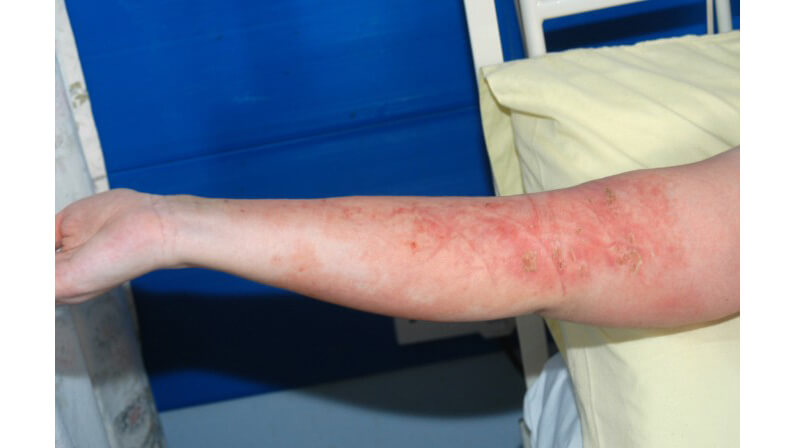Streptococcal Toxic Shock Syndrome (STSS)
The phrase “flesh-eating bacteria” makes anyone tremble. A worrying rise in Streptococcal Toxic Shock Syndrome (STSS) cases in Japan is due to this pathogen. This essay examines the scenario, risks, and ways to stay informed and reduce risk.
Table of Contents

Understanding STSS: Beyond Skin Infection
Streptococcal Toxic Shock Syndrome (STSS)
Necrotizing fasciitis (STSS) is rare yet life-threatening. Group A Streptococcus (Group A Strep) bacteria infect the body and release toxins that damage tissues and kill them quickly. STSS is more serious than strep throat and impetigo caused by Group A Strep.
Here’s how STSS differs from skin infections:
Streptococcal Toxic Shock Syndrome (STSS)
- Severity: STSS damages tissue quickly, within hours or days. Typical skin infections worsen gradually.
- STSS causes extreme pain, redness, and swelling at the infection site, along with fever, chills, and fast heart rate. Localized redness and pain characterize skin infections.
- Treatment: STSS requires rapid medical intervention, frequently with severe antibiotics and tissue removal. Topical or oral antibiotics treat skin infections.
Why the Japanese Rise? Uncovering Possible Causes
Streptococcal Toxic Shock Syndrome (STSS)
Japan recorded approximately 1,000 STSS cases on June 2, 2024, surpassing 2023’s total. This worrisome rise has public health experts scurrying for answers. The cause is unknown, however some ideas link it to COVID-19 limits being lifted.
Less Social distance: Group A Strep may have circulated more due to less social distance, increasing infection risk.
Decreased mask use may transmit bacteria-carrying respiratory droplets.
Streptococcal Toxic Shock Syndrome (STSS)
These are merely possible theories; researchers are still looking for the surge’s source.
Signs of Trouble: When to Get Help
Early diagnosis and therapy are essential for STSS recovery.
Some important symptoms:
Streptococcal Toxic Shock Syndrome (STSS)
- Strong pain, redness, and swelling at the infection site suddenly
- Chills and fever
- Nausea, vomiting
- Unsteadiness
- Fast heart rate
- Confusion
- If you have any of these symptoms, especially a recent skin wound or infection, get medical assistance immediately.
Successful recovery is greatly improved by early intervention.
Streptococcal Toxic Shock Syndrome (STSS)
STSS Treatment: Options and Strategies
The main STSS treatment is:
- Aggressive Antibiotic Therapy: Strong intravenous antibiotics fight bacteria and stop infection.
- Surgery: In severe situations, dead or contaminated tissue may need to be removed to avoid additional damage and improve healing.
- Supportive Care: Intravenous fluids and pain control help patients fight infection.
STSS treatment is time-sensitive.
Streptococcal Toxic Shock Syndrome (STSS)
Seeking medical assistance immediately after recognizing any worrying symptoms allows doctors to start treatment quickly and improve outcomes.
Risk-Reduction Strategies
Streptococcal Toxic Shock Syndrome (STSS)
While STSS cannot be prevented, you can reduce your risk:
- Practice Good Hygiene: After using the restroom, before eating, and after touching wounds, wash your hands often with soap and water.
- Look after your wounds: Clean and treat all wounds per your doctor’s recommendations to prevent infection.
- Consider Close Contact: Avoid close contact with strep throat and other bacterial diseases.
- Immune Strengthening: A good diet, sleep, and stress management boost the immune system, making it more effective against illnesses.
- Staying Current: Current Information Sources
- For the latest STSS news in Japan, contact trusted sources like:


